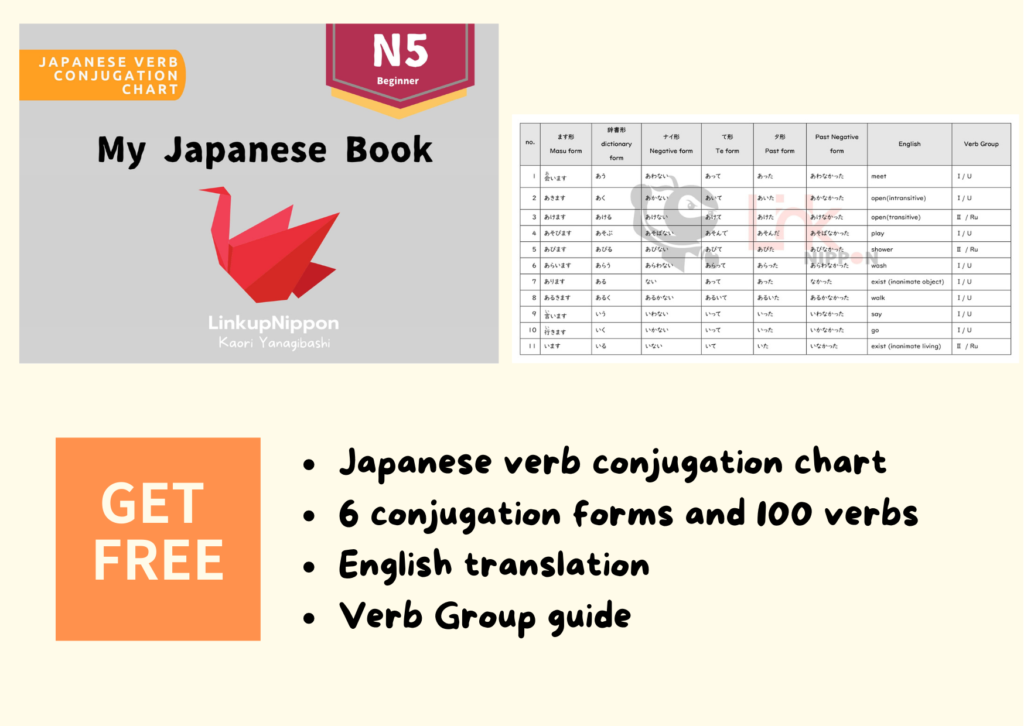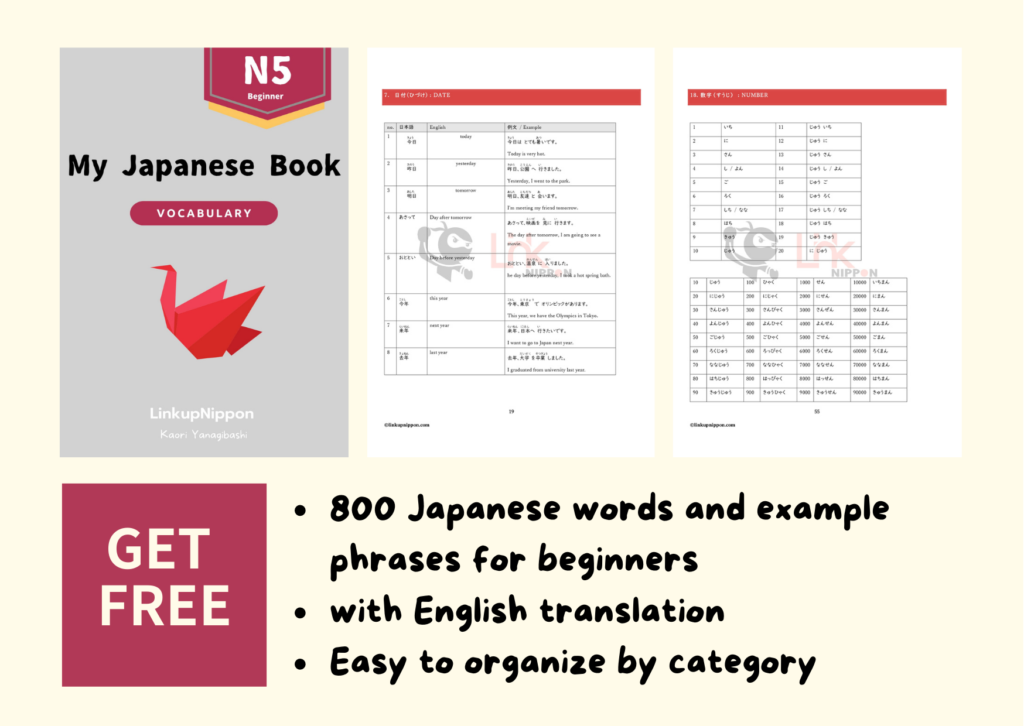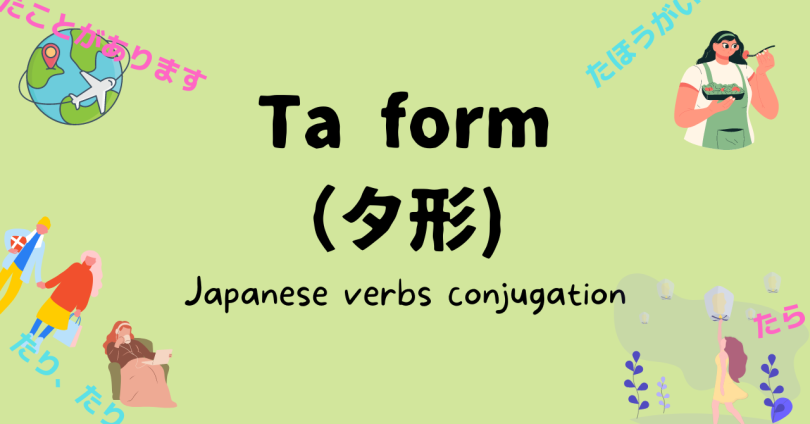First, Ta form in Japanese verb conjugation is generally used to speak of the past tense. The form is related to Te form.
If you have not studied Te form yet and would like to review it, check this article before proceeding.
In this article, I will introduce how to convert from Te form to Ta form, and introduce some important expressions used with Te form at the beginner level.

Table of contents
Convert to Ta form in Japanese verb from Te form, how?
Very simple. First, each verb is converted to Te form. Next, replace “Te” with “Ta” in Te form. If “De” is used, replace it with “Da”.
Step1. Convert to Te form
(To eat) たべる → たべて
(To wirte) かく → かいて
(To swim) およぎます → およいで
Step2. Replace “Te” with in “Ta”
(To eat) たべて → たべた
(To wirte) かいて → かいた
(To swim) およいで → およいだ
※If “De” is used, replace it with “Da”.
| Dictionary form | Te form | Ta form |
|---|---|---|
| きく | きいて | きいた |
| およぐ | およいで | およいだ |
| はなす | はなして | はなした |
| あそぶ | あそんで | あそんだ |
| かえる | かえって | かえった |
| いく | いって | いった |
| たべる | たべて | たべた |
| ねる | ねて | ねた |
| くる | きて | きた |
| する | して | した |
How to practice Te form in Japanese conjugation?
Step1. Proper understanding of rules
Surely,it seems obvious, doesn’t it? However, when different conjugations are introduced in the future, different rules will be used and many new verbs will be introduced. Therefore, it is important to firmly input “this is the rule for Ta form”.
Step2. Repeat until you can answer reflexively
In the beginning, You will think…”Which group is this verb?” ,and then if it is Group I, You will remind that “What is the letter before Masu…..?”.It is the right process. However, when it comes to real conversation, there is no time to think about it. You need to respond reflexively, i.e., within 1-2 seconds.
Definitely,if you want to be able to speak, this time lag can be a problem.So, for this kind of conjugate memorization, use flashcards.The recommended app is Anki. If you haven’t used it yet, please also read this article.
Ta form expressions for beginners
Generally, we use Ta form in informal conversation as a past tense expression. There are many other useful expressions. The mistake is often made in connecting Te form. Let’s recognize it as a Ta-form expression!
1. ~たり~たり (do…and do ….)
:to list up two or three activities or events among several
にちようび、さんぽしたり、えいがを みたり した。
I had a walk and watch the movie on Sunday.
*します → した (Group Ⅲ, Irregular verbs)
*みます → みた(Group Ⅱ, Ru-verbs)
2. ~たほうがいいです (You should~)
: To propose or recommened to someone the speaker’s opinion or advise.
毎日、野菜を食べたほうがいいいです。
You should eat vegetable everyday.
*たべます → たべた ( Group Ⅱ , Ru-verbs)
3. ~たことがあります (I have the experience of…)
: Indicates experiences
日本へ 3回 行ったことがあります。
I have been to Japan 3 times
*いきます → いった ( Group Ⅰ , U-verbs)
4. ~たら (if….)
:Indicates supposition if something occurs, then something else will happen.
日本へ行ったら、おいしいお寿司が食べたいです。
If I go to Japan, I want to eat good sushi.
*いきます → いった ( Group Ⅰ , U-verbs)
Japanese conjugations other than Ta form
Additionlaly,if you want to master Japanese verbs, this is the book for you. Verbs are very important in any language. Let’s master them and learn to speak them!

Please check other verb conjugation, Dictionary form and Negative form. These are also verb conjugations to be mastered at the beginner level! Check them out.
| Japanese verb conjugation table for beginners |
|---|
| マス形 (Masu form)▶ |
| テ形 (Te form)▶ |
| 辞書形 (Dictionary form)▶ |
| ナイ形(Negative form)▶ |
| タ形 (Ta form)▶ |
Did you get the vocabulary list for beginners?








